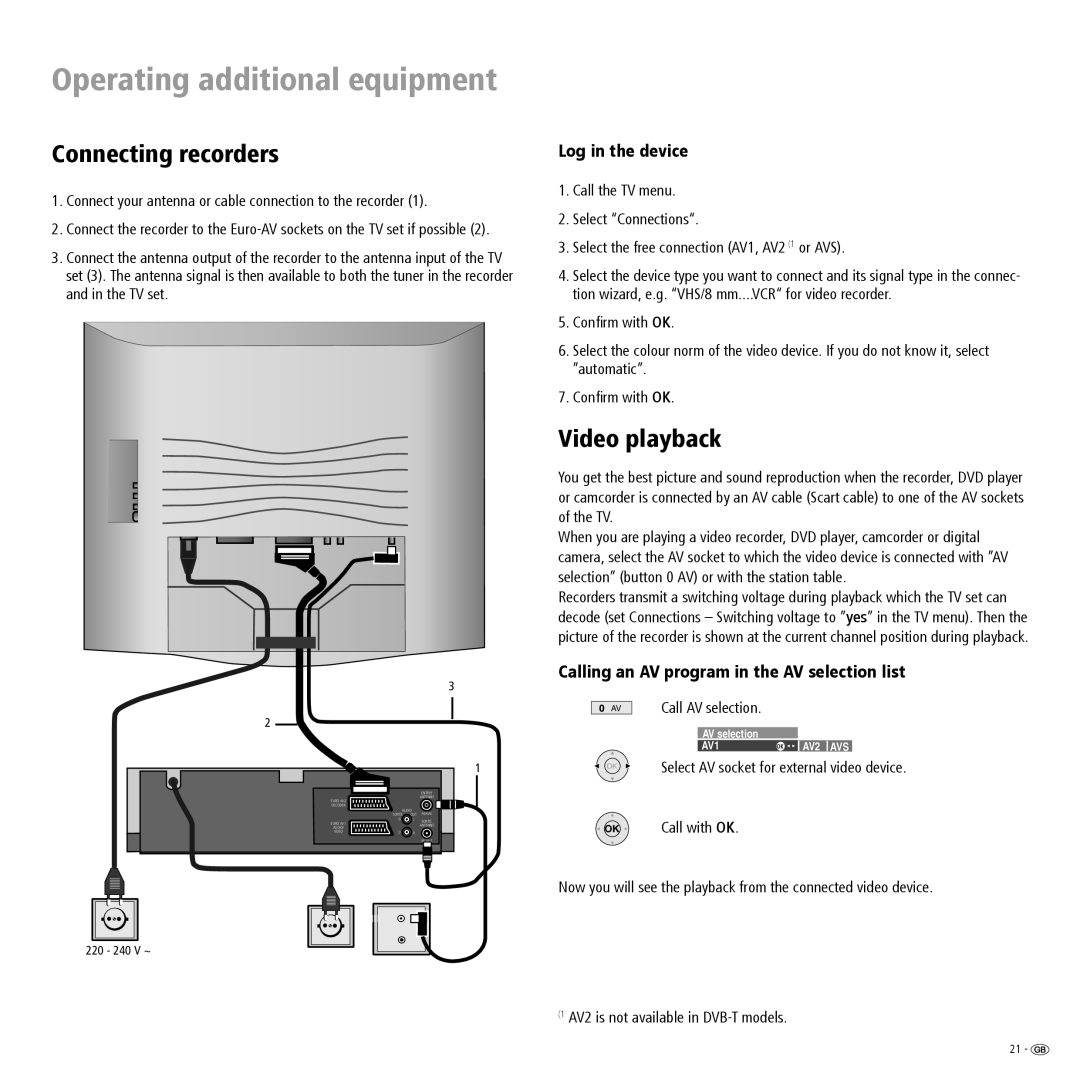
Operating additional equipment
Connecting recorders
1.Connect your antenna or cable connection to the recorder (1).
2.Connect the recorder to the
3.Connect the antenna output of the recorder to the antenna input of the TV set (3). The antenna signal is then available to both the tuner in the recorder and in the TV set.
3
2
1
|
|
| ENTREE |
EURO AV2 |
|
| ANTENNE |
|
|
| |
DECODER |
|
|
|
| AUDIO | AERIAL | |
| SORTIE | OUT | |
EURO AV1 | G | L | SORTIE |
|
| ANTENNE | |
AUDIO/ |
|
|
|
VIDEO | D | R |
|
RF OUT
220 - 240 V ~
Log in the device
1.Call the TV menu.
2.Select “Connections“.
3.Select the free connection (AV1, AV2 (1 or AVS).
4.Select the device type you want to connect and its signal type in the connec- tion wizard, e.g. “VHS/8 mm....VCR“ for video recorder.
5.Confirm with OK.
6.Select the colour norm of the video device. If you do not know it, select ”automatic”.
7.Confirm with OK.
Video playback
You get the best picture and sound reproduction when the recorder, DVD player or camcorder is connected by an AV cable (Scart cable) to one of the AV sockets of the TV.
When you are playing a video recorder, DVD player, camcorder or digital camera, select the AV socket to which the video device is connected with ”AV selection” (button 0 AV) or with the station table.
Recorders transmit a switching voltage during playback which the TV set can decode (set Connections – Switching voltage to ”yes” in the TV menu). Then the picture of the recorder is shown at the current channel position during playback.
Calling an AV program in the AV selection list
![]()
![]() AV Call AV selection.
AV Call AV selection.
AV selection |
|
|
AV1 | OK | AV2 AVS |
OK | Select AV socket for external video device. |
OK | Call with OK. |
Now you will see the playback from the connected video device.
(1 AV2 is not available in
21 - ![]()
